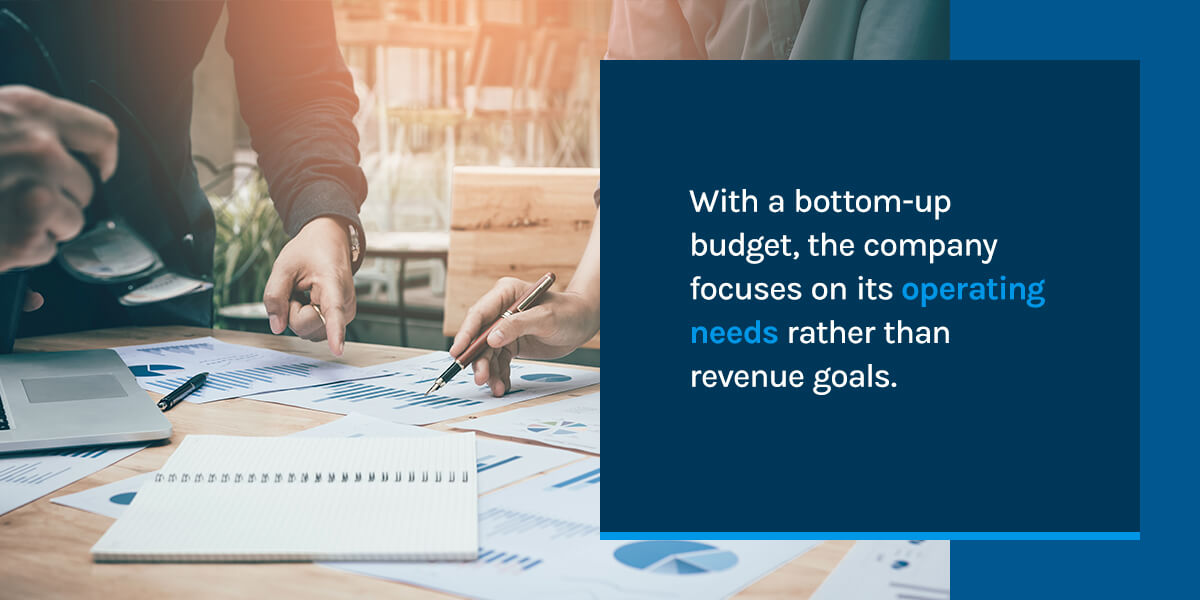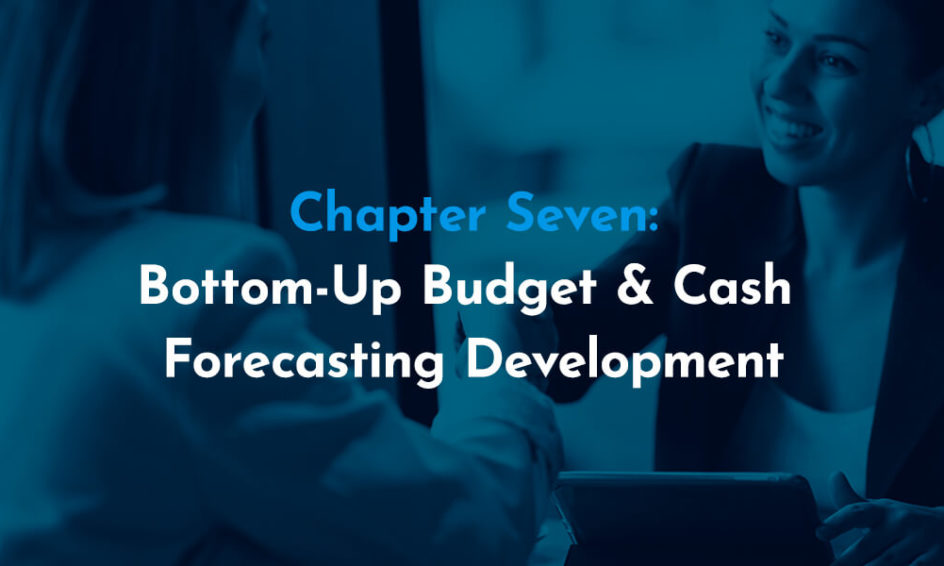Difference Between a Budget and Cash Forecasting | How to Build a Bottom-Up Budget | How to Use KPIs in Cash Forecasting
When small business owners hear the words “budget” and “cash forecast,” they often assume the two are the same thing. The reality is that your business should have both a budget and a cash forecast. Both a budget and a forecast look toward the future, but their approach is slightly different. A forecast is a prediction, while a budget is a plan.
Knowing how to build a budget and develop a cash forecast will make a substantial difference for your company’s overall financial health.
Difference Between a Budget and Cash Forecasting
While budgets and cash forecasting both focus on a company’s future, their role differs. With a budget, a company makes a spending and growth plan and follows it to achieve its goals. With a cash forecast, a company looks at past data and uses it to predict where the company is headed in the most predictable future.
A business budget is often the following:
- A representation of what a business wants to achieve during a specific period, such as over a year
- Updated as needed, often annually
- Compared to actual spending and earnings to see how reality varies from expectations
- Adjusted as needed to align with a company’s actual financial situation
A cash forecast is usually the following:
- Updated regularly, typically quarterly or monthly
- A prediction that is based on the most recent reality
- A strong focus on cash balances in addition to expenses and revenue
If a company adjusts its cash forecast, it usually doesn’t directly impact spending, such as how much employees get paid or how much a company spends on supplies.
At Compass East, we work with companies to help them create a bottom-up budget. With a bottom-up budget, the company focuses on its operating needs rather than revenue goals.

The difference with a bottom-up budget is two-fold. First, as you may have guessed from its name, it starts at the bottom, moving up through each department until it reaches the top of the company. The structure ensures that individual departments get the funding they need and that their future expenses are anticipated in detail.
Second, a bottom-up budget is rooted in data and need. We evaluate the previous periods to determine not just what the spending or growth trends were, but whether the spend was efficient. Did it help achieve your goals, and are you expecting the spend to contribute to your growth in the future? These questions then determine if something is truly necessary and should be included in your budget, or if it’s just a continuation of bad spend management.
A bottom-up budget is great for any organization, but it is an especially optimal format for smaller companies, particularly bootstrapping or profit-focused ones.
How to Build a Bottom-Up Budget
A bottom-up budget is typically created at the general ledger (GL) or vendor level. At Compass East, the process of building a bottom-up budget goes something like this:
- Pull “Transaction Detail by Account Report” for all cost of goods accounts, operating expenses and assets. You can customize this as needed.
- Run the pivot table and complete proper formatting.
- Copy the pivot table data to the details tab and add additional columns, such as type of cost, necessity rank and cost forecasting.
- Review ranking combinations, complete the suggested forecasting column and make any necessary notations.
- Review necessity rank, quality rank, review notes and complete “Start, Stop, Continue” column with the client.
- Create an actual bottom-up budget with a completed client detail file.
When we work on your company’s bottom-up budget, we sort costs into several categories, based on the type, the necessity and the quality. We get input for you regarding the necessity and the quality of each cost. Cost categories include:
- Fixed: These are the costs that stay the same every month, such as your rent, employee salaries, insurance, property taxes, depreciation and interest.
- Variable: These costs can change based on multiple factors, such as your company’s production volume. The costs often go up as production goes up and drop when production drops. Variable costs include packaging, commissions, credit card fees, freight charges and the cost of goods sold.
- Mixed: These include components of fixed and variable costs. They might have a base rate that’s fixed and a cost that varies based on usage. For example, a software company might charge a monthly fee, plus a per-user fee.
When making a bottom-up budget, your company should rank costs based on necessity. We use the following categories to rank our clients’ costs:
- Can do without: These are the expenses your company doesn’t need and will continue on fine without, such as entertainment, meals, travel and some types of office supplies.
- Important but not required: These are somewhat essential expenses, but you can cut them if necessary. They can include maintenance and repair costs, consulting fees and fees for using recruiting websites.
- Required: These are the costs your company has to spend money on. They include rent, taxes, payroll, cost of goods and insurance.
When ranking costs based on quality, think of the value you get from spending on each item:
- Unhappy
- So/So (Mid-level)
- Great
To see what you can cut from your budget, focus on the costs that fall into both the “can do without” and “unhappy” categories. If you continue to need to make cuts to the budget, next focus on the “important but not required” and “so/so” costs. Easy wins are expenses that fall into the “required” and “great” categories. You can hang on to them. However, typically the most impactful changes to your business will occur in the “important but not required” and “so/so” categories. So do not sleep on them!
To see what you can cut from your budget, focus on the costs that fall into both the “can do without” and “unhappy” categories. If you continue to need to make cuts to the budget, next focus on the “important but not required” and “so/so” costs. Easy wins are expenses that fall into the “required” and “great” categories. You can hang on to them.
Budget Types
Once you’ve ranked each cost and have decided what to keep and what to cut back on or eliminate, you can put the budget together. When creating a bottom-up budget with clients, we put together a suggested budget based on their unique needs. The suggested budget usually takes one of the following forms:
- Forecasted budget: This type of budget is formula-driven, based on an incremental data pull. It’s ideal for use when there will be a steady increase over the previous period.
- Straight-line budget: This type of budget is based on total expenses divided by a certain number of months in a year. It’s appropriate for fixed monthly budgets. Although you can adjust based on your specific needs, 12 months is usually used.
How to Use KPIs in Cash Forecasting
Cash forecasting is slightly different from budgeting, but it is equally critical for your business. Often, cash forecasting involves key performance indicators (KPIs) to make predictions about your business’s future cash flow.
Some of the KPIs you would use when developing a cash forecast include:
- Working capital: Working capital refers to the assets your company can quickly liquidate into cash, such as short-term investments. Ideally, you’re able to use working capital to pay off all of your business obligations, if needed.
- Operating cash flow: Operating cash flow is your net income, plus accounts payable adjustments, accounts receivable adjustments, depreciation and inventory adjustments. It’s all the money that flows in and out of your business.
- Accounts receivable turnover: Accounts receivable turnover is the rate at which your company turns accounts receivable into cash.
- Accounts payable turnover: Accounts payable turnover is how frequently your company has to pay creditors over a year.
- Return on equity: Return on equity measures your company’s net income against its shareholder equity. It provides a glimpse into your company’s overall financial health and potential.
- Average price per customer: The average price per customer is how much your company spends on the customers it services. It’s part of your revenue forecast.
- Customer growth rates: The customer growth rate is also part of your revenue forecast. It shows how quickly your company acquires new customers during a specific period.
- Revenue growth rates: A critical part of your revenue forecast, the revenue growth rate shows how your company’s revenue changes month over month.
- Customer acquisition cost (CAC): CAC refers to how much your company spends getting new customers. It’s distinct from the average price per customer, which refers to how much you spend on customers in total.
- Direct costs percentage of revenue: Related to costs of goods sold (COGS), direct costs percentage of revenue compares your company’s earnings to its expenses.
Compass East Can Help You Build a Bottom-Up Budget
At Compass East, we provide our clients with budgeting help and financial forecasting assistance to aid them in making the most of their future. To learn more about creating a bottom-up budget, contact us today.


